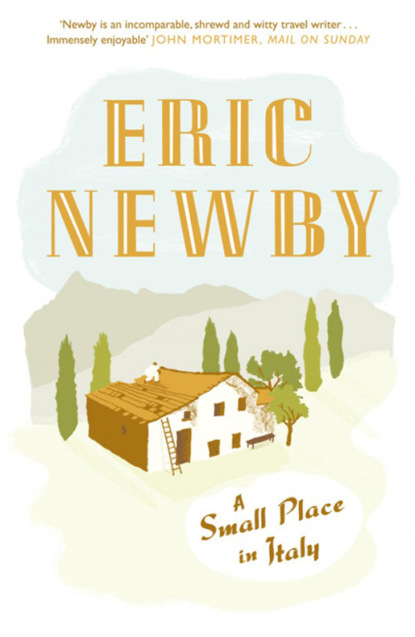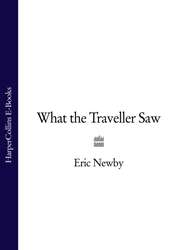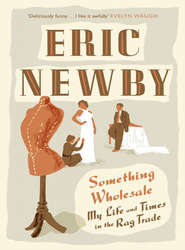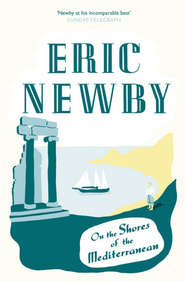По всем вопросам обращайтесь на: info@litportal.ru
(©) 2003-2024.
✖
A Small Place in Italy
Автор
Год написания книги
2018
Настройки чтения
Размер шрифта
Высота строк
Поля
The key for this door, which, like all the others, was of hand-forged iron, was the biggest of the lot. It was a key that was easily identifiable, even in the dark, not only because it was the biggest but because someone at one time had attempted to turn it in the lock, or perhaps another lock, and when it had failed to open had inserted a metal rod through the ring at the end of the shaft and twisted that a full half turn without breaking it. Now, in order to turn the key in the lock, it had to be inserted upside down and then jiggled about for what could be ages. Yet we never considered the possibility of changing the key and the lock for a new one. The key was much too beautiful. In fact there was another complete set of keys but I lost them the first day we took over the house and we never found them again.
This lock had the peculiar foible that when the wind was blowing from the south-west it would open itself. The only way to prevent this happening was to secure the door to a ring-bolt in the outer wall of the building using the wire of which there were great coils in the loft.
This door opened into a living room of an unimaginably primitive kind, with a floor made from rough, irregular stone slabs on which it was difficult to set a chair without it wobbling.
To the left, as we went in, there was an old, varnished wood, glass-fronted cupboard with blue-check curtains, an armadio a muro; and against the far wall there was something known as a madia, of which this was a very ancient example, a kneading trough for making pasta with a removable top, which could also be used as a table.
To the right of the door there was a fornello a carbone, a charcoal-burning stove, built of brick, and next to it was an open fireplace, with a shelf over it. At one time, what must have been a long time ago, the walls, the stove and the fireplace had all been whitewashed but by now the smoke of innumerable fires had dyed them all a uniform bronze colour.
Inside the fireplace a long chain extended up the chimney into the darkness from which was suspended a large copper pot, and round about the fireplace were disposed a number of cooking utensils, all of them archaic but all of them still in use. The ashes in the fireplace were fresh and there was plenty of kindling and enough logs to make another fire stacked to one side of it.
The other furniture, all of it apparently homemade, consisted of a small table with a plate, a bowl and a knife, fork and spoon set on it, a chair and a minute stool that looked as if it had been made for a child, for sitting in front of the fire. But although they were homemade these items had been constructed and repaired with great skill by whoever had undertaken the work.
The only window was small and barred with metal slats, like the one in the cowshed. Beneath it there was a small marble sink with a brass tap that was working; above it was an extremely dangerous-looking electric light fitting, which consisted of a bulb connected to the two naked wires which supported it by a couple of blobs of solder, a lighting system that was not at that moment working, although Signora Angiolina said she knew how to get it going.
The only other illumination was provided by several small, homemade brass lamps, fuelled with olive oil, that looked as if they might have been looted from an Etruscan tomb.
‘Who has been living here?’ Wanda asked Signora Angiolina. This was the first intimation we had had that someone might already be in residence at I Castagni.
‘This is the room,’ Signora Angiolina said, with a certain air of surprise, as if this was something that was common knowledge, ‘in which Attilio lives.’
‘But who is this Attilio?’ Wanda asked. By the way she spoke I knew that she was worried. Neither of us had envisaged the existence of a sitting tenant or, even worse, a squatter.
‘Attilio is the brother of the wife of Signor Botti, the padrone, the owner. He is only a little man,’ she said, referring to him as an ometto – as if his smallness was some sort of recommendation. ‘Ma lui è molto bravo. He knows how to do everything.’
What we had already been forced to designate mentally as ‘Attilio’s Room’ – were we really going to have him as a sitting tenant, even though he was ‘molto bravo’? – was separated from the back part of the premises by a partition made from canniccio – wattle and daub. Canniccio was made with interwoven canes, the thinnest of the giant reeds that grow everywhere in this part of the world, plastered with a mixture of clay, lime, dung and chopped straw. These reeds, which grow to a great height, fifteen feet or more, were everywhere on the hillside and once established spread like wildfire. Their roots had the consistency of cast iron and in trying to eradicate them I succeeded in bending a pick.
These canes had dozens of uses: as supports for clothes lines, for supporting vines and making pergolas, for fencing in earth closets and rendering the user invisible to the vulgar gaze, for picking fruit from tall trees (by attaching a little net to the end of one of them). And when they finally rotted and broke they made good kindling. Meanwhile, unless ruthlessly controlled, they devastated the countryside.
Now the whole of this partition wall was riddled with wood-worm and was beginning to fall apart. A ruinous door in its left hand side opened into what had been another cowshed. It was difficult to imagine domestic animals, however domesticated, walking through one’s kitchen/living room on their way in from the fields in the evening to their sleeping quarters and each morning going the other way, back into the open air, but this was presumably what had happened.
This cowshed was also cobbled. It was also completely windowless. These downstairs rooms were so dark that I began to wonder if the inhabitants had been spiritualists. What was good news was that the floorboards overhead and the beams that supported them were in quite good condition.
The key that opened the door of the room at the top of the outside staircase was the most complex and beautiful of all the keys and the easiest to use. There was no juggling or jiggling necessary. The Signora inserted it the right way up and it opened first time.
Inside there were two rooms, back and front, divided from one another by a less ruinous version of the partition wall on the ground floor but reinforced with wooden uprights that gave it a slightly olde-Englishe, half-timbered appearance. To the left of it, another rickety, lockless door, similar to the one on the ground floor, separated the two rooms, front and back, both of which had two windows. All four were minute. It was obvious that if we were going to be able to read in either one of them, even in broad daylight, we would have to have bigger windows and these walls would take some excavating as all of them were composed of large stones and were more than two feet thick.
The roof itself appeared to be more or less sound but the main beam which supported it, a really hefty piece of chestnut, would have been more reassuring if it hadn’t had a great crack in it.
Looking at it, as I already had at numerous other beams and boards during this tour of inspection, I found it difficult to decide whether I Castagni might be good for another hundred years, or might collapse altogether in the course of the next couple of hours.
The view from the outside balcony of this upper floor was terrific. Here we were about eight hundred feet above the sea. It was a beautiful afternoon and the sun shone from a cloudless sky, flooding the front of the house with a brilliant golden light.
To the west, beyond the house, the grassy track that led past the front of it from the torrent, gradually descended a hundred yards or so beyond it between lines of vines to a pretty two-storeyed building, a smaller version of I Castagni; and some fifteen miles or so beyond it were the mountains of the Cinque Terre beyond La Spezia, behind which the sun was now beginning to sink, like a huge orange.
Far below to the south-west was the Plain of Luni, with its innumerable small holdings and market gardens. And beyond them were the wooded heights that rose steeply above the far, right bank of the Magra, here running down through its final reach before entering the Ligurian Sea.
It was at this moment that I took a black-and-white photograph of the house which, when it was printed, had more of the quality of an engraving than a photograph, a magical effect, but one that I was never able to emulate, however hard I tried.
Down on the ground floor, at the foot of the outside staircase, next to the front door and at right angles to it, there was another door that opened into what was a miniature, protruding wing of the house. This part of it was almost completely severed from the main part of the building by a frightful fissure that ran from top to bottom of it.
According to Signora Angiolina, who had been living in the neighbourhood when it occurred, it had been caused by the great earthquake of 1921, which had damaged or destroyed a number of houses in the region. Again I had the feeling that yet another part of the building might be about to collapse.
This was the only room in the house to which Signora Angiolina did not have a key, apart from the one that opened the door to the loft at the back of the house, the one that was going to need a ladder to get to it.
The only way one could see into this little room was through a heavily barred window; fortunately the wooden shutters were open.
It was a very small room, freshly whitewashed and lit by the same sort of oil lamps we had seen in the kitchen. The few bits of furniture, which almost completely filled it, consisted of a large, old single bed of polished wood with a high back inlaid with mother-of-pearl; made up with clean white linen sheets which were turned back, ready to receive whoever was going to sleep between them. Alongside the bed there was a little stool covered with a worn fragment of carpet, and on the wall next to the bed there was a crucifix and an oleograph of La Santissima Vergine del Rosario di Fontanellato, Wanda’s village near Parma, where I had been a prisoner-of-war in 1943, and below it there was a small, circular, marble-topped table, which it later transpired contained a vaso da notte, a chamber pot.
On the other side of the bed there was a very old wooden chest. Overhead the whitewashed ceiling looked decidedly wonky, with big patches of damp where the rain had penetrated; but in spite of this the room was a lap of luxury compared with the rest of the house, and the only part remotely ready for occupation.
‘And who sleeps in this room?’ Wanda asked superfluously. Like me she already knew the answer before Signora Angiolina confirmed that this was the bedchamber of Attilio. It was also unnecessary to ask who washed and ironed his sheets.‘Sta arrivando adesso, Attilio,’ she said. ‘He is coming now.’
FOUR (#ulink_4807469c-c18d-52ac-8015-420a34c18632)
Emerging from the deep shadow cast by the trees on the banks of the torrent we could see a small figure travelling towards us across the grass at a tremendous rate, rather like one of those gompa lamas who move across the Tibetan plateau at high speed, negotiating what would seem to be impossible obstacles on the way. A method of progression made possible only because they are in a trance state.
Soon we could see him clearly. A tiny, wizened man, bent by a lifetime of toil, toothless so that in profile his mouth looked like a new moon. He was old, how old it was impossible to say, anything between seventy and eighty, quite possibly even more.
As he drew near we could hear him talking to himself in an animated way, and occasionally laughing at some private joke. He was certainly nothing like a gompa lama, more like a benevolent gnome.
He was dressed in a pale-coloured jacket, baggy trousers, a white, open-necked shirt and on his head he wore a big, palecoloured cap that looked a bit like an unbaked sponge cake. Everything about him was very clean looking.
Now he was abreast of us and I prepared to welcome him, or for him to welcome Signora Angiolina, or welcome the three of us. But he did none of these things. Instead, he looked at us benevolently, cackled a bit while fishing a modest sized key from a pocket, said something that sounded like ‘Bisogna vedere un po’, the equivalent of ‘I’ll have to think this out a bit’, then opened the door to ‘Attilio’s Bedroom’, took the key out of the lock and went in and shut the door, still continuing to chuckle away on the other side of it.
I was completely bowled over by this encounter. I was sure I had met him before on two occasions in 1943, after the German occupation of Italy.
The man I remembered had looked more or less the same age and that was twenty-four years ago. Then I had thought of him as being very old, I suppose because anyone over the age of forty looks old when you yourself are twenty-four. And I remembered that he had already lost his teeth which had made him look older than perhaps he was.
The first time had been at the end of September when he had been the mysterious third man in the car decorated with a red cross in which an heroic Italian doctor had been driving me to the Apennines along the Via Emilia, what was then the main German line of communication with the battle front to the south. In Parma, which was stiff with Germans, the car, a Fiat propelled by gas, had broken down in Piazza Garibaldi, the main square of the city. There we had been surrounded by German Feldgendarmen armed with Schmeisser machine pistols telling us to hurry up with our repairs and be gone. While the doctor and I had been trying to get it going Attilio, if that was who he was, had sat in the back seat, dressed in a garment called a tabar, a voluminous cloak, cackling away at them completely unafraid.
The second meeting I had with this mystery man was later that winter when he literally saved my life after I had become hopelessly lost in a thick forest and got soaked to the skin in a river. He had put me up for the night in what must have been one of the loneliest houses in the Apennines. The front door of that house was almost exactly the same as the one here, at I Castagni. I wondered if it reminded him of it too.
It was Attilio (or was it?) who, later that same evening in the house in the mountains, told me the extraordinary story of what happened after Maestro Giovanni shot the Bird with the Golden Wings and gave it to the King; and it was he, the following morning, who put me on the right track back to the cave in which I had been living, and from which I had strayed like a lost sheep.
But it was impossible that he and Attilio could be the same man, if for no other reason than that of age. The man I had known in the autumn of 1943 must have been long since dead.
‘What we’ve got to do, before we buy the house, is to talk to him,’ Wanda said; but trying to interview Attilio proved to be like trying to interview a will o’ the wisp.
As we went up the hill with Signora Angiolina we had a last, fleeting glimpse of the little house through a break in the trees. Smoke was coming from the chimney which meant that Attilio had emerged from his place of refuge in the bedroom and was about to start preparing his evening meal. I wondered what it would be: perhaps some magic potion that would render him invisible.
A little later, sitting in Signora Angiolina’s cavern-like kitchen, eating cake and drinking the white wine made with long-ripened grapes, of a sort that was always produced for honoured guests, she told us what she knew about Attilio. We, ourselves, decided to say nothing.
‘Attilio is a very good little man, un ometto molto bravo,’ was how she described him for the second time that afternoon, as though we hadn’t taken it in. ‘He can do anything, repair anything, make anything. Some people think he is a bit strange, because he talks to himself more than he does to other people but he does this because he is really rather timido and some people make fun of him.
‘When he was young,’ she went on, ‘he learned the work of a blacksmith, and of a wheelwright. He can still work anything in iron or wood and he can make spades and hoes and the handles for scythes and for any other tools that are needed.
‘And he can make ladders, the triangular sort called tramalli, and he makes the oil lamps you saw in the kitchen.











